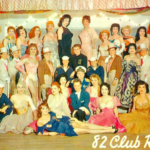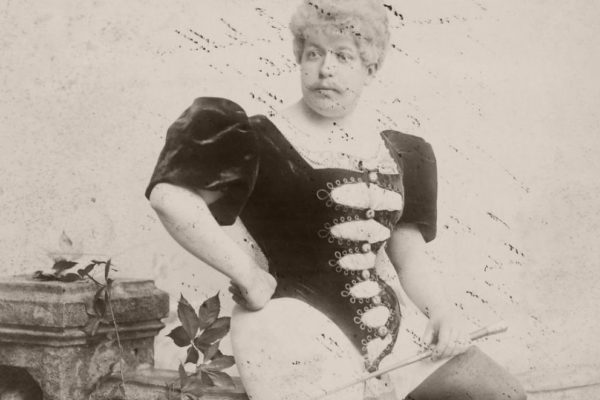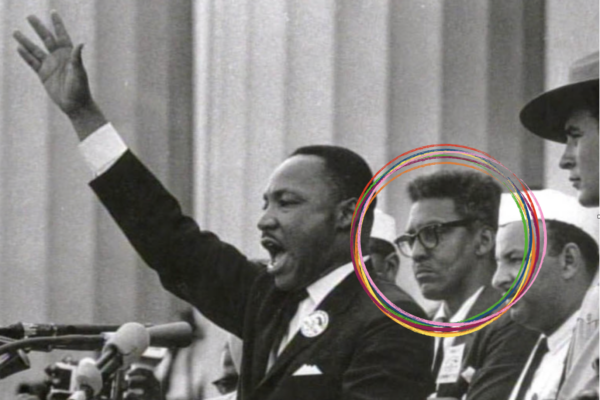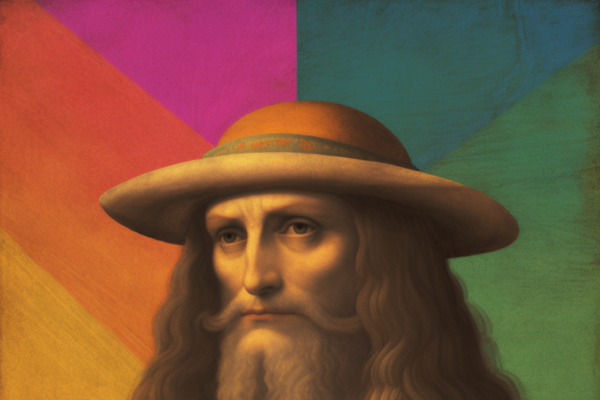It’s a little before 11 PM on April 12th, 1888 in downtown Washington DC. President Grover Cleveland has just finished up a speech on what will become American Somoa, his wife Frances is already asleep, and, four blocks east, at the intersection of F and 12th Street, thirty Black, gay men are having a party. It’s William Dorsey Swann’s thirtieth birthday, or “The Queen,” as her friends call her drag persona, and everyone has come in their finest silks. Swann leads the dancing. His friends, near nude, sing along, but all reverie comes to a halt when the DC police show up. Before cops can get in, The Queen throws herself in front of the door, barricading the entrance and resisting arrest. Her terrified friends flee through the back or throw themselves out second-story windows. When all is over, twelve have been taken in, including Swann, and up to four hundred people have risen out of bed to gawk at these men in long wigs as they’re marched down to the police station. Their names will be published in the paper tomorrow, but journalists will bear no mention of how Swann has just become the first person to take physical action in the name of queer liberation. She has begun a hundred-years long legacy of queer activists, all building off the back of The Queen as she stands in the doorway, protecting her loved ones, yelling “you is no gentleman.”
F and 12th is a Walgreens now, but before the superstore, before Stonewall, before Rupaul publicly decimated Jimmy Fallon for calling him a drag queen, there was William Dorsey Swann, the very first “Queen of Drag.” Born around 1858, the fifth of thirteen children, Swann began his life enslaved on a plantation in Hancock, Maryland. After the Emancipation Act of 1862, Swann’s family purchased a farm in Washington County. Migrating toward DC in the 1880s, Swann carved out a community for himself, all Black, gay men, many drag artists, but Swann was the architect, the first to give “drag queens” their name.
During this time, female impersonation was seen as an offshoot of blackface minstrel shows. Audience members could easily make the jump from mocking Black men to mocking Black women, and White men were known to dress up as African American women and perform “wench” songs. So it’s particularly noteworthy that Swann, a Black man, would have such power over the styles of a genre largely dedicated to perpetrating racist stereotypes against him. He designed costumes for iconic DC drag queens like Alden Garrison and Louise “Mother” Diggs.
Swann’s drag balls took place at members’ houses, many of whom worked for wealthy White families during the day. Because he suspected informants within the scene, the venue would often change at the last minute, and invites were given out in secret at the local YMCA. Raids were a constant in the DC drag scene.
It’s important to note that drag at this time was not overwhelmingly taboo. Men had been dressing up as women for thousands of years. In Greek mythology, Achilles and Hercules both dressed as women to escape some tragic fate or please some angry god. Male actors of Shakespeare’s time regularly played female roles, as the stage was considered a male arena. Even today, onnagata, male actors portraying female kabuki characters, must study women’s makeup techniques in Japan and practice feminine mannerisms.
Brigham Morris Young himself, son of the president of The Church of Jesus Christ of Latter-day Saints, performed as a woman named Madam Pattirini. In the late 1800s, she and her trademark falsetto could be found lighting up main stages throughout Utah. Many audience members didn’t even know she was a Young, though those who did, mostly accepted her.
Thus, for hundreds of years, what we would now call drag was considered high art. It was only with the complete meld of drag culture and queer culture around the 1930s that drag became socially maligned.
So why did Swann’s parties face such scrutiny? Though drag had been tolerated for decades, DC’s drag community became linked to both the gay community and the Black community in the late 1800s. Swann’s friends therefore faced colder treatment than your average vaudevillian entertainers. Their gender deviance could only be perceived as a threat to society, not a form of entertainment. To 1880s DC, Swann’s drag performance only enhanced his aura of social deviance, at a time when more and more US cities were enacting anti-drag laws.
To keep the peace, police set detectives on Swann’s tail. On New Year’s Eve 1895, authorities raided his house on L Street during a party that courts would later characterise as a “hell of iniquity”. Swann was charged with “keeping a disorderly house” (19th century speak for running a brothel) and sentenced to ten months in jail. “I would like to send you where you would never again see a man’s face, and would then like to rid the city of all other disreputable persons of the same kind,” the judge claimed.
Swann appealed these claims by requesting a presidential pardon from Grover Cleveland, and he lost, but he became the first person to level a legal complaint against the US government in the name of gay rights. You’ll note, Swann was a man of many firsts. Like many other trailblazers, though, he was unsung in his time. There are no confirmed photos of William Dordsey Swann. If newspapers hadn’t reported their disgust for Swann, we wouldn’t know any details of his life. And if Swann hadn’t fought for his cause both physically and legally, we wouldn’t even know he existed.
In this way, Swann joins the ranks of figures like Mary Jones, one of the first openly transgender women on record, and Felix Hall and Pierce Lafayette, the first documented case of a love affair between two enslaved men. We know Jones only because of the heinous newspaper articles written about her. We can celebrate the love of Hall and Lafayette only because their enemies were so outspoken.
In Swann’s case, though, we have not only the newspapers to thank but also someone named Channing Gerard Joseph. Himself a Black and queer, Joseph stumbled upon Swann’s story while combing through news archives, searching for his own history. Until that point, Swann had been largely forgotten by historians, even by the queer communities that he helped build hundreds of years ago. Joseph’s book House of Swann: Where Slaves Became Queens — and Changed the World is set for release with Crown Publishing Group. Let’s hope the book does well enough that no graduate students will have to comb through thousands of pages of old newspapers in 2122 in order to read about it.
Messy Nessy Chic has chosen to follow Joseph’s lead with regard to gendering Swann.
















